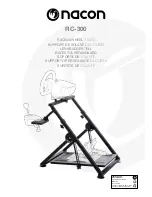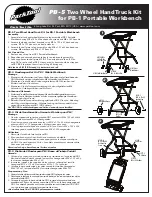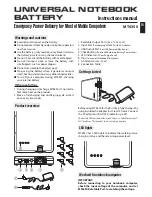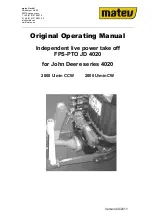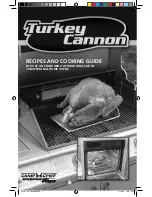
P a g e
|
15
ENERGIZER
BATTERY
MANUFACTURING
VERSION
1.2
Contact
Materials:
Nickel
plated
stainless
steel
is
recommended
because
it
provides
good
conductivity
and
environmental
stability
at
a
reasonable
cost.
Nickel
plating
must
be
adherent,
continuous,
and
non
‐
porous.
The
nickel
plating
must
also
resist
the
wear
that
occurs
during
the
insertion
and
extraction
of
batteries.
The
suggested
plating
thickness
is
5
‐
6
micrometers.
Battery
Orientation:
How
the
battery
is
situated
in
the
compartment
is
an
important
design
consideration.
The
location
of
the
air
access
path,
plenum,
and
seal
are
determined
by
the
facing
of
the
battery
air
holes.
The
orientation
of
the
air
hole
side
of
the
battery
also
influences
the
location
of
the
electrical
contacts.
Determining
the
facing
of
the
battery
air
holes
is
generally
a
function
of
device
use
and
the
position
of
the
battery
compartment
within
a
device.
Figure
14
presents
an
example
of
a
device
which
orients
a
Zinc
Air
Prismatic
battery
with
the
air
holes
facing
the
compartment
door.
The
cover
holds
the
battery
in
place
and
does
not
restrict
air
flow
to
below
what
is
required
for
device
operation.
Figure
14:
Battery
Orientation
and
Device
Contacts
Reversal
Protection:
Battery
reversal
protection
is
recommended
for
battery
operated
devices
to
prevent
against
possible
damage
to
a
device
or
battery
if
a
battery
is
inserted
incorrectly.
Reversal
protection
can
be
mechanical
or
electronic,
depending
on
the
device.
An
example
of
mechanical
reversal
protection
is
a
design
feature
in
the
battery
compartment
that
only
allows
the
battery
to
be
inserted
with
the
correct
polarity.
This
can
be
accomplished
by
including
a
raised
lip
or
ridge
that
conforms
to
the
battery
contour
when
inserted
in
the
correct
polarity.
The
recommended
location
of
the
rib
for
Energizer
Zinc
Air
Prismatic
batteries
is
where
the
recessed
edge
around
the
non
air
hole
side
of
the
battery
fits
into
the
compartment.
Battery
Dimensions:
Similar
to
other
battery
systems,
Zinc
Air
batteries
can
bulge
slightly
under
normal
discharge
conditions
as
zinc
is
converted
to
zinc
oxide
in
the
intended
reactions.
Energizer
recommends
designing
devices
around
standard
industry
dimensions
where
available.
Typical
dimensional
specifications
for
Energizer
Zinc
Air
Prismatic
batteries,
including
consideration
for
possible
bulge,
can
be
found
on
the
respective
datasheets.



















